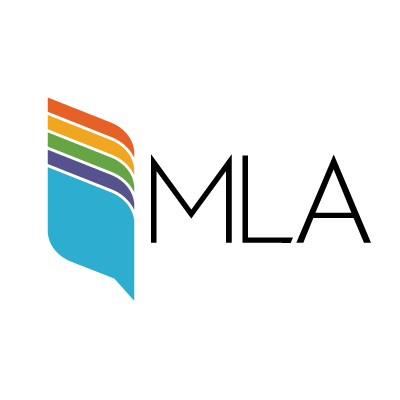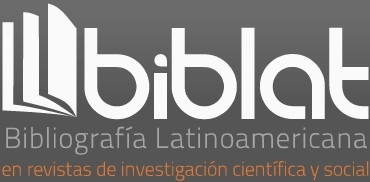Interprative linguistics and the semiotic foundations of translation
DOI:
https://doi.org/10.35494/topsem.2011.1.25.78Keywords:
-Abstract
This paper reports on a study performed prior to recent
descriptive proposals (Rastier, 2006), in order to identify the
epistemological obstacles currently being created by the semiotic
conceptions governing cognitive and communicative theories of
translation. Because these conceptions fall within the tripartite
syntax/semantics/pragmatics split imposed by logical positivism,
they are unable to capture the particular characteristics either
of linguistic signs or of text semiotics, as defined by historical
and comparative linguistics, most notably by de Saussure.
Even more than the sign, the concept of the text actually places
interpretation fully back within the scope of linguistics, allowing
it to be seen in a new light, as an interactive movement between
the text and the intertext. Text linguistics, particularly in its
interpretative dimension, thus assumes special responsibility for
applying a standardized methodology to describe relationships
within and between texts, whether in the same or in different
languages.
Downloads
References
BALLARD, M. (2005). « Éléments pour la structuration de l’équivalence: point de vue traductologique ». Recherches en linguistique et psychologie cognitive, núm. 21.
BENJAMIN, W. (2000) OEuvres. París : Gallimard, 3 vol.
CANON-ROGER, F. (2006). La traduction, en ligne http://www.revuetexto.net/Reperes/Themes/Canon-Roger/Canon Roger_Traduction.html.
CONSEIL DE L’EUROPE (ed). (2000). Cadre Européen Commun de Référence pour les Langues. París : Didier.
DESCLÉS, J.-P. (2009). Architecture cognitive et computationnelle: la GAC. Disponible en [http://www.lalic.paris4.sorbonne.fr/RECHERCHE/equipe1f.php].
ECO, U. (2003). Mouse or Rat ? Translation as Negotiation. Londres: Weidenfeld and Nicolson.
HAMANN, J. G. (1981 [1762]). Aesthetica in nuce [Trad. de Henry Corbin]. En Henry Corbin. París : Cahiers de l’Herne.
KRAIF, O. (2006). « Qu’attendre de l’alignement de corpus multilingues? ». Revue Traduire, 4e Journée de la traduction professionnelle, Société Française des Traducteurs, núm. 210.
LANGACKER, R. (1986). “An Introduction to Cognitive Grammar”. Cognitive Science, X, 1.
LEDERER, M. (1980). La traduction simultanée. Fondements théoriques. París : Minard.
LEVI, P. (1987). Ad ora incerta. Turín: Garzanti [Tr. fr. par Louis Bonalumi, À une heure incertaine. París : Gallimard, 1997].
MALRIEU, D. et RASTIER, F. (2001). « Genres et variations morphosyntaxiques ». Traitements automatiques du langage, núm. 42, 2.
MARGOT, J.-C. (1979). Traduire sans trahir. París : L’âge d’homme.
MOUNIN, G. (1963). Les problèmes théoriques de la traduction. París :
Gallimard.
NIDA, E. (1960). Message and Mission, the Communication of the Christian Faith. New York: Harper.
___________ (1969). The Theory and Practice of Translation (avec C. R. Taber). Leiden: Brill.
NISSEN, K., FLEURY, S., SALEM, A. (2010). « Traductions freudiennes ». Explorations textométriques. v. 3a, sous la direction de Serge Fleury [http://www.cavi.univ-paris3.fr/ilpga/ilpga/tal/lexicowww/navigations-tdm.xml].
NORD, C. (1997). Translating as a Purposeful Activity. Functionalist Approaches Explained. Manchester: St. Jerome Publishing.
OITTINEN, R. (2000). Translating for Children. New York-Londres: Garland Publishing.
RASTIER, F. (1991). Sémantique et recherches cognitives. París : PUF.
___________ (1995). « Communication ou transmission ? ». Césures, núm. 8. Version électronique sur le site de la revue Texto ! [http:// www.revue-texto.net/Inedits/Rastier/Rastier_Transmission.htlm].
___________ (2003). « Le silence de Saussure ou l’ontologie refusée ». En Bouquet (ed.). Saussure. París : L’Herne.
___________ (2004). « Ontologie(s) ». Revue des sciences et technologies de l’information, serie: Revue d’Intelligence artificielle, vol. 18, núm. 1.
___________ (2006). « Traduction et genèse du sens ». En Marianne Lederer (ed.). Le sens en traduction. París : Minard.
___________ (2007a). « Saussure au futur–Écrits retrouvés et nouvelles réceptions ». Montserrat López Díaz et María Montes López (coord.). Perspectives fonctionnelles: emprunts, économie et variations dans les langues. Saint Jacques de Compostelle : Axac, pp. 73-79. Actes du XXVIIIe Congrès de la SILF.
___________ (2007b). « Passages ». Corpus, 6.
___________ (2008). « Sémantique du Web vs Web sémantique ». Syntaxe et sémantique, 9.
___________ (2009). « Pour un remembrement de la linguistique: enquête sur la sémantique et la pragmatique ». Dominique Verbeken (ed.). Entre sens et signification-Constitution du sens: points de vue sur l’articulation sémantique-pragmatique. París : L’Harmattan.
___________ (2011). « La sémiotique des textes, du document à l’oeuvre ». Treleani M. (ed.). Sciences humaines et patrimoine numérique. París : L’Harmattan-Ina, collection «Les médias en actes».
REISS, K. und H. VERMEER (1984). Grundlegung einer allgemeinen Translationstheorie. Tübingen : Niemeyer.
SAUSSURE, F. de (1971). Cours de linguistique générale. París : Payot.
___________ (2002). Écrits de linguistique générale. París : Gallimard.
SELESKOVITCH, D. (1975). Langage, langues et mémoire. París : Minard, Lettres modernes.
___________ (1980). « Introduction », dans M. Lederer. La traduction simultanée. París: Minuit.
SRPOVÁ, M. (1987). « L’expérience cognitive et les systèmes linguistiques ». In Fernandez-Vest J. (ed.). Traduction et vulgarisation scientifique. París : Discoss III.
___________ (1988). À propos des types d’opérations de traduction. In Actes du 13e. Colloque international de linguistique fonctionnelle (Corfou, 1986) : Athènes.
___________ (1992). « Pour les “stylistiques comparées” des opérations linguistiques et extralinguistiques de la communication interculturelle et interlinguale ». Arcaini E. (dir.). La traduzione. Quaderni di Libri et Riviste d’Italia, 28, Saggi e documenti (1).
TRZASKALIK, T. (2007). Gegensprachen. Das Gedächtnis der Texte. Georges-Arthur Goldschmidt, Stroemfeld (nexus 78) : Bâle-Frankfurt am Main.
TOURY, G. (1985). “A Rationale for Descriptive Translation Studies”. In T. Hermans (ed.), The Manipulation of Literature. New York: St. Martin Press. Croom Helm. Vermeer, H. J. (1996). A skopos Theory of Translation (Some Arguments for and against). Heidelberg, TEXTconTEXT (Band 1).
VENUTI, L. (2000). The Translation Studies Reader. Londres-New York: Routledge.
WEAVER, W. (1955 [1949]). ‘Translation’, in W. Locke and A. Booth (eds). Machine Translation of Language
Downloads
Published
How to Cite
Issue
Section
License

Tópicos del Seminario is licensed under a Creative Commons Reconocimiento-NoComercial-CompartirIgual 4.0 Internacional License.














